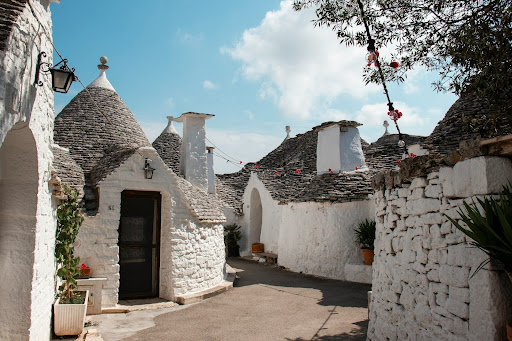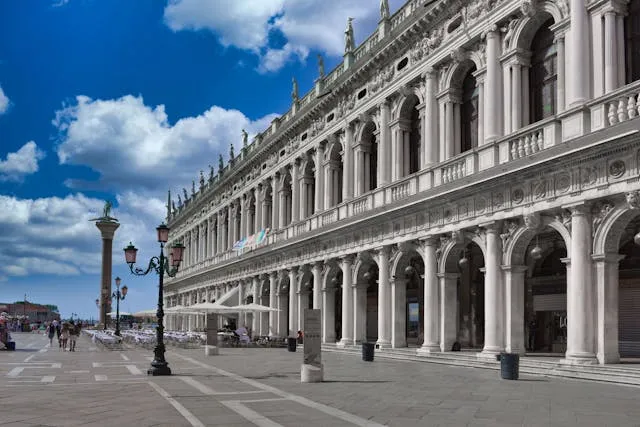Alberobello feels like entering a children’s storybook. This enchanting town in Italy’s Puglia region captivates visitors with its unique trulli houses, cone-shaped limestone buildings that create one of the world’s most distinctive architectural landscapes. Beyond the fairytale appearance lies centuries of living history that continues to thrive in this UNESCO World Heritage Site.
What Makes Alberobello’s Architecture So Special
The trulli aren’t just pretty buildings; they’re architectural marvels that exist nowhere else in the world. These cone-shaped limestone houses with their distinctive pointed roofs were built using a dry-stone technique, meaning no mortar was used. The stones are carefully balanced on top of each other, creating structures that have stood for centuries without modern construction methods.
The conical roofs are topped with decorative pinnacles that aren’t just for show. Each one has meaning, often representing religious symbols or family crests. Visitors walking through the streets will notice mysterious symbols painted on many roofs. These are ancient markings that served as signatures for the builders or protective charms for the families living inside.
Where to Find the Best Trulli Neighborhoods
Rione Monti is where visitors find the most photographed trulli. This hillside district has over 1,000 cone-shaped houses clustered together like a fairy village. The narrow streets wind upward, and from the top, travelers get breathtaking views of the entire trulli landscape stretching toward the countryside.
Rione Aia Piccola is quieter and more residential. Here, many trulli are still family homes where locals actually live. Walking through this area gives visitors a more authentic feel of daily life in this historic Italian town. The streets are less crowded, making it perfect for peaceful exploration and better photos without crowds in the background.
The Living History You Can Experience
What makes Alberobello special isn’t just the buildings; it’s that this remains a living, breathing town. Many trulli have been converted into shops where local artisans sell handmade ceramics, textiles, and wooden crafts using traditional techniques passed down through generations.
Visitors can explore the Trullo Sovrano, the town’s only two-story trullo that’s now a museum. Inside, guests see how families lived in these unique spaces, with furniture and tools from the 18th and 19th centuries. The ingenious use of space amazes visitors, and every nook and corner served a purpose.
Best Times to Visit and Practical Tips
Spring (April-May) and early fall (September-October) are ideal. The weather is perfect for walking, and visitors avoid the summer crowds. Summer can be overwhelming with tour buses, especially during July and August.
Coming early in the morning or late afternoon provides the best light and fewer people. The golden hour makes the white limestone walls glow beautifully, and visitors have the narrow streets mostly to themselves.
Local Experiences You Shouldn’t Miss
Staying overnight in a trullo offers an unforgettable experience. Several have been converted into boutique accommodations. Sleeping under a cone-shaped roof creates memories that last a lifetime. The thick stone walls keep the interior cool in summer and cozy in winter.
Travelers should try local specialties at family-run restaurants tucked inside converted trulli. Orecchiette pasta with local vegetables and burrata cheese are must-tries. Many restaurants source ingredients from the surrounding Itria Valley farms.
Joining a walking tour with a local guide helps visitors understand the construction techniques and spot details they’d otherwise miss. Local guides love sharing stories about family trulli and the traditions that keep the culture alive.
Why UNESCO Recognized This Town
In 1996, Alberobello became a UNESCO World Heritage Site because it represents an outstanding example of human settlement and land use. The trulli demonstrate how people adapted to their environment using available materials and ancient building techniques.
The recognition helps preserve the architectural heritage, but it also means strict regulations protect the authentic character of the historic districts. This ensures that when visitors arrive, they’re seeing genuine medieval architecture, not modern replicas.
Planning Your Visit
Alberobello is easily accessible from Bari (about 1 hour by car) or from the coastal towns of Monopoli and Polignano a Mare (30 minutes). Many visitors combine it with other Puglia destinations, but spending at least one full day here allows travelers to truly appreciate the atmosphere.
The town comes alive in the evening when day-trippers leave. The trulli are beautifully lit, creating an even more magical atmosphere. Local families emerge for their evening stroll, children play in the small squares, and visitors get to see Alberobello as locals experience it daily.



